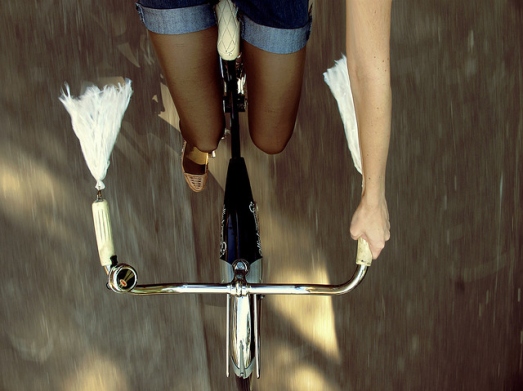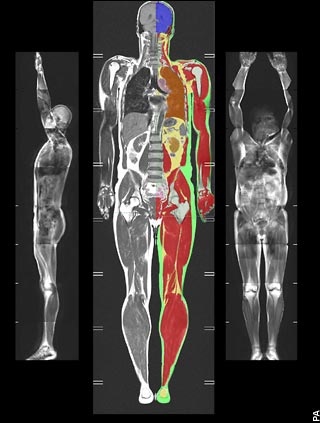Falling in love can make you feel all soft and gooey inside.
Unfortunately, it can have the same effect on your outside. Skip a workout here, order some greasy takeout there, and before you know it, you have more than just butterflies in your stomach—you’ve got a full-on jelly roll hanging over your waistband.
Or as Lauren Conrad, former star of The Hills, put it: You’ve acquired the dreaded “boyfriend layer.”
“When we get comfortable in a relationship, we establish new habits together that aren’t always the best for our weight,” says Amy Gorin, an assistant professor of psychology at the University of Connecticut.
Five of the behaviors that can lead to a serious case of love chub. But don’t worry—here are some easy fixes.
- You Eat Out…All the Time
When you’re single, you tend to prepare healthy foods at home. But once you’re in a relationship, it’s decadent dinner dates followed by caloric brunches.

“Couples bond over food, and enjoying it becomes a special ritual in their relationship,” says nutritionist Christine Avanti, author of Skinny Chicks Don’t Eat Salads. That’s bad news for your waistline: A Men’s Health analysis of 24 national chains revealed that the average entree at a sit-down restaurant contains 867 calories. And that doesn’t include apps, sides, and dessert.
The fix: Eat in. “Cooking together can be intimate,” says Elizabeth Ward, a nutritionist in Boston. “Food is very sensual, especially when you take turns tasting it.” Plus, of course, you can control the fat and calories by using healthy recipes and ingredients that are low in fat. When you do dine out, eat a healthy snack that contains protein and fiber a few hours before your meal.

“Women often skimp all day when they’re going out at night,” Ward says. “But that leaves them so hungry that they end up overdoing it.” Nonfat yogurt and a piece of fruit or a small bowl of cereal with low-fat milk are smart choices.
- You’re Always in Bed

Or on the couch. Or anywhere but the gym. A study last year in the journal Obesity found that couples who live together for two or more years are less likely to be physically active, and the women are more likely to become obese. “As positive as relationships can be, they also change your routine,” says Martin Binks, director of Binks Behavioral Health. “You schedule more couple’s events and have less time to yourself.” Drinks with your new guy…or a date with the old treadmill? It’s not exactly a tough choice.
The fix: Get him involved. A study in the Archives of Internal Medicine found that women who exercised with a partner lost more weight than those who sweated solo. “When people do something together, they’re more likely to stick with it,” explains Karen Miller-Kovach, R.D., author of He Loses, She Loses. So sign up together for a 5-K, go for a bike ride instead of watching a movie, or join the same gym. When you don’t feel like going, he’ll drag you there, and you’ll do the same for him.
- You Match Him Bite for Bite

It’s tough to stick to petite portions when your dining companion downs 500 to 1,500 more calories a day than you do.
“Women develop ‘portion distortion,'” Ward says. “You don’t recognize a normal-size serving anymore because you’re always eating with a guy who consumes huge platefuls of food.” He might be able to get away with it (guys have more muscle mass, so they require more calories), but shoveling in all those extra forkfuls will eventually catch up with you.
The fix: Serve yourself less. Eat about three-quarters of what he’s eating. Sorry, but women burn 26 percent fewer calories than men do, so at that rate you’ll just about break even, says clinical psychologist Susan Albers, author of 50 Ways to Soothe Yourself Without Food.
- His Snacks Are Your Snacks

You might not buy chips for yourself, but when he leaves the bag out on the coffee table, you need supreme willpower to ignore it. A study from Newcastle University’s Human Nutrition Research Center found that women were more likely to adopt their partner’s eating habits than vice versa.
“It’s one way women connect with men,” says Stacy Kaiser, a licensed psychotherapist based in Southern California.
The fix: Know your options. You have two diet-friendly choices: Serve yourself a small amount of his snack and put it on a plate (dipping your hand into the bag over and over again leads to diet disaster), or do what Ward suggests and have a portion-controlled, lower-calorie alternative on hand to munch while he takes down that bag of chips or pint of ice cream.
- You’re Happy

Research shows that what’s good for your heart may be bad for your hips. A study published last year in the journal BioPsychoSocial Medicine found that happy people were less likely to succeed at losing weight than those with a “slightly negative and cautious outlook.”
The fix: Weigh in often. It’s great to accept your body and not obsess over every last calorie, but it’s hard to feel good about yourself when none of your pants fit. To prevent your eating habits from spiraling out of control, Miller-Kovach recommends regular weigh-ins.

“Studies have shown that once you pass the five-pound mark, weight gain can take off like a runaway train,” she says. Seeing the scale creep toward that mark can be a call to action.
Still need convincing? Women in a Duke University study who lost as little as 10 percent of their body weight reported dramatic improvements in the bedroom.
“Research shows that people who are more active and happier with their bodies have more satisfying sex lives,” Ward says. If that’s not motivation, we don’t know what is.















